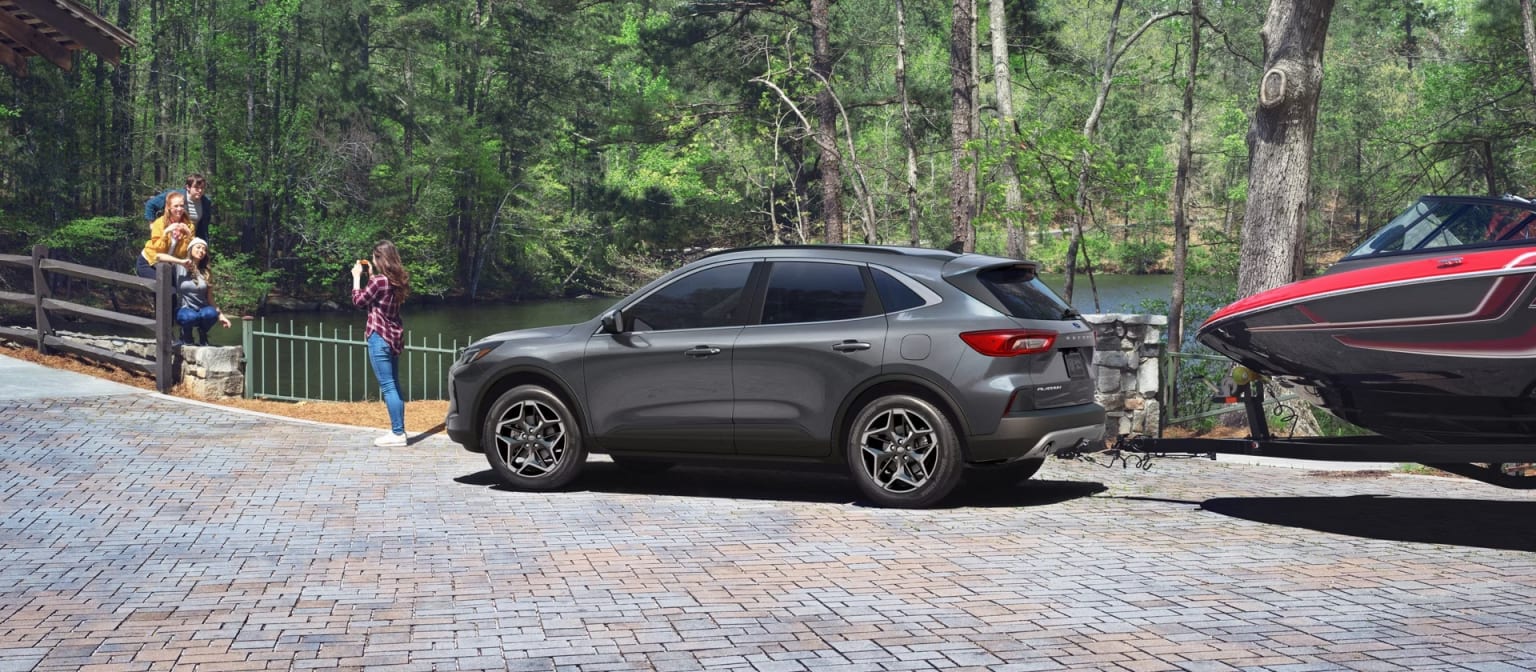
Ford EcoBoost MPG vs. Hybrid for Road-Trippers: Cost per Mile at Highway Speeds
Planning a long run up I-16 or a beach-bound weekend from Statesboro? If you’re comparing Ford EcoBoost MPG to Ford’s hybrid options, the right answer often comes down to one thing: what happens at steady highway speeds with a full load of people and gear.
Time to break down how EcoBoost turbo engines stack up against Ford hybrids for road trips, how to estimate cost per mile, and which models typically deliver the best Ford SUV MPG when you’re cruising.
Highway reality: why the winner can change at 70–80 mph
Hybrids crush city driving because they recapture braking energy and can run the engine less at lower speeds. At a steady 70–75 mph, that advantage narrows. Aerodynamic drag and constant engine load matter more, which is where modern EcoBoost turbos can shine—especially in SUVs geared for highway efficiency.
Rule of thumb:
Hybrids hold an edge in mixed driving and moderate-speed highways.
Ford EcoBoost SUVs’ MPG can be surprisingly close (or even equal) on pure interstate runs, particularly when lightly loaded and driven smoothly.
Availability and EPA estimates vary by model year and configuration; think in ranges, not absolutes when it comes to finding the best Ford SUV MPG.
Five second cost-per-mile math ⏰
Use this quick formula on your phone:
Cost per mile = (Price per gallon) ÷ (Realistic highway MPG)
Example scenarios (gas at $3.50/gal):
36 MPG highway → 9.7¢/mile
32 MPG highway → 10.9¢/mile
28 MPG highway → 12.5¢/mile
23 MPG highway → 15.2¢/mile
Tip: Your true highway Ford EcoBoost MPG at 75–80 mph may trail the EPA highway number by 5–15%. Adjust the MPG down a bit to get a realistic road-trip cost.
Where Ford EcoBoost engines shine on the highway
EcoBoost uses smaller displacement with turbocharging, letting the engine sip fuel at light loads and summon torque only when you need it (passing or hills). That can keep highway rpm low and steady, good for your Ford EcoBoost MPG.
EcoBoost SUV examples (representative behaviors):
Escape 1.5L EcoBoost (AWD/FWD): Efficient cruise; strong value for smaller families.
Bronco Sport 1.5L/2.0L EcoBoost (4×4): Adventure-ready, still respectable at 65–70 mph.
Explorer 2.3L EcoBoost (RWD/AWD): Solid highway legs with room for five to seven.
Expedition 3.5L EcoBoost (4×2/4×4): Big SUV comfort; MPG depends on load, roof gear, and speed.
Why road-trippers like Ford EcoBoost MPG:
Confident passing power without a downshift frenzy
Lower cabin noise at cruise (thanks to torque at lower rpm)
Simple fuel stops, no charging schedule to plan
Where Ford hybrids win (especially off the interstate)
Ford’s hybrid SUVs pair an efficient gas engine with an electric motor and battery to save fuel whenever load is low or speeds vary. On rolling two-lanes, around small towns, or in traffic, they stretch every drop.
Hybrid SUV highlights (behavioral ranges):
Escape Hybrid (available AWD): A frequent contender for best Ford SUV MPG, especially for commuters who mix highway with city.
Explorer Hybrid (availability varies by model year/trim): Efficient for a 3-row, shines in mixed routes.
Maverick Hybrid (pickup, not an SUV): Worth a look if you want open-bed utility with great economy.
Why road-trippers like hybrids:
Excellent overall trip MPG when the route isn’t just straight interstate
Fewer gas stops with the right driving style
Often higher city ratings for errands once you reach your destination
Side-by-side: Which saves more on a Statesboro road trip?
Imagine two realistic setups at $3.50/gal fuel:
Escape Hybrid AWD
Realistic highway MPG at 72–75 mph: ~34–36 MPG
Cost per mile: 9.7–10.3¢/mi
Escape 1.5L EcoBoost AWD
Realistic highway MPG at 72–75 mph: ~31–33 MPG
Cost per mile: 10.6–11.3¢/mi
On pure interstate, the Hybrid still has an edge in the battle for the best Ford SUV MPG, but it’s closer than you might expect. Add in detours, traffic, or low-speed sightseeing and the Hybrid widens the gap. Step up in size (Explorer/Expedition), and the difference will depend more on weight, passengers, roof racks, and speed.
Hidden factors that move your MPG (and cost per mile)
Speed: Each 5 mph above ~65 chips a noticeable slice from MPG—whether for hybrid or Ford EcoBoost MPG.
Roof gear: Kayaks/boxes increase drag; a hitch-mounted box often hurts MPG less.
Tires: All-terrain tread looks great but adds rolling resistance and noise.
AWD vs. FWD: AWD adds weight and driveline losses; choose it for traction where you truly need it.
Load & elevation: Extra passengers, cargo, and hills increase engine work.
How to maximize Ford EcoBoost MPG on the highway
Use Eco or Normal mode and set cruise where traffic allows.
Remove roof racks when not in use; pack heavy items low and inside.
Check tire pressures to door-jamb spec before you leave.
Smooth inputs: Build speed gently, time lane changes, avoid unnecessary braking.
Skip idling: Modern Fords are happy to be off when parked (and you’ll save fuel).
So…EcoBoost or Hybrid for road trips?
Choose Hybrid if your trip mixes interstate with towns, attractions, or stop-and-go, and you want the strongest overall fuel savings.
Choose Ford EcoBoost MPG if you’re mostly at a steady 70–75 mph, want strong passing power without hunting for gears, or prefer the lowest purchase price with excellent highway manners.
If your goal is the best Ford SUV MPG, start with Escape Hybrid. If you need more space, test the Explorer lineup (availability and ratings vary by year). For three rows and big-miles comfort, Expedition’s 3.5L EcoBoost makes long days easy—just plan your speed and packing for better MPG.
Drive them back-to-back in Statesboro
At J.C. Lewis Ford Statesboro, we’ll set up a real-world route (some interstate, some two-lane) and send you out in an EcoBoost SUV and a Hybrid so you can feel the difference yourself. We’ll even help you build a cost-per-mile estimate based on your commute or road-trip plans.
Ready to find your fit? Explore our Hybrid and Ford EcoBoost inventory with impressive MPG, compare estimated trip costs, and take your next Ford for a highway spin today.